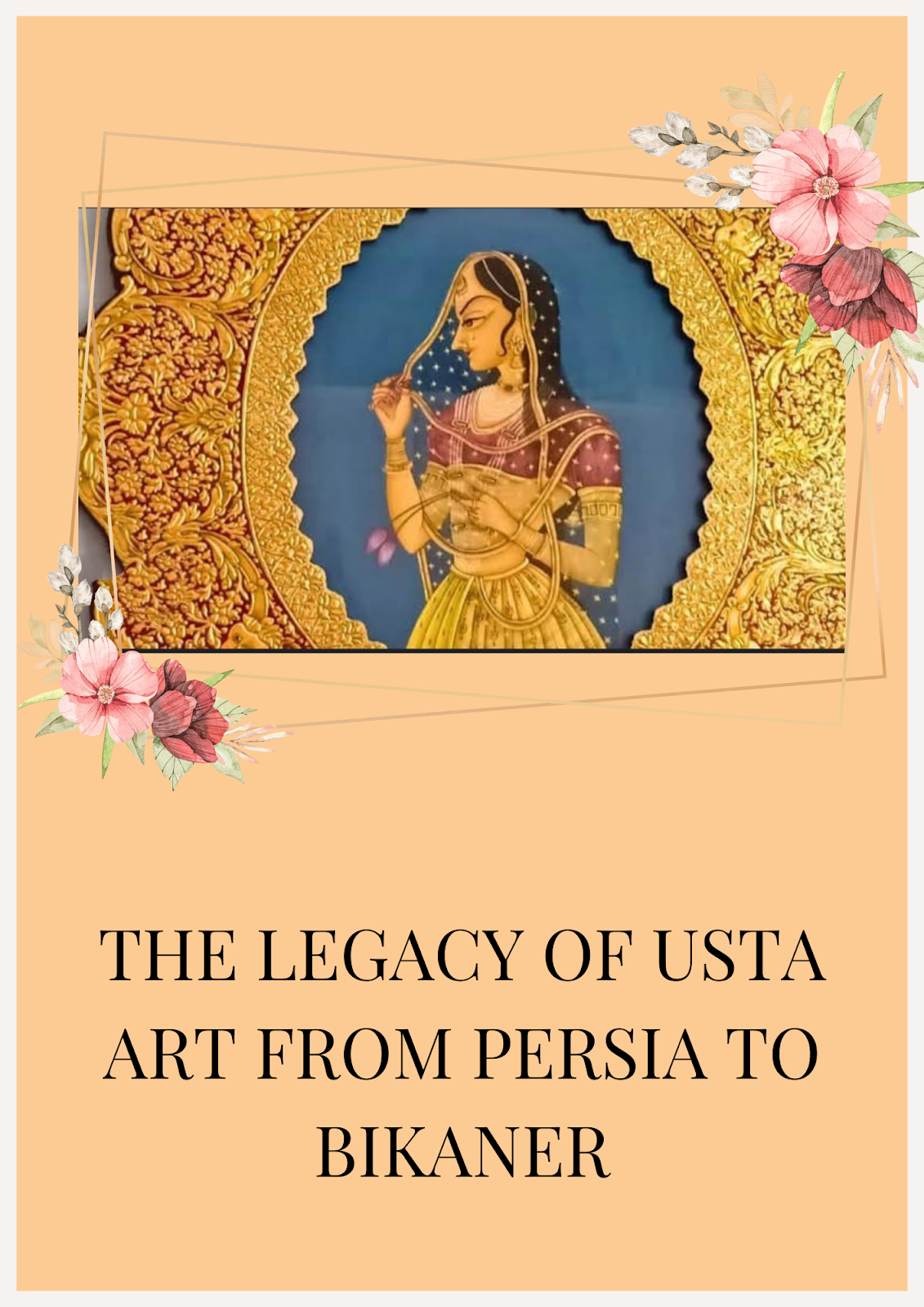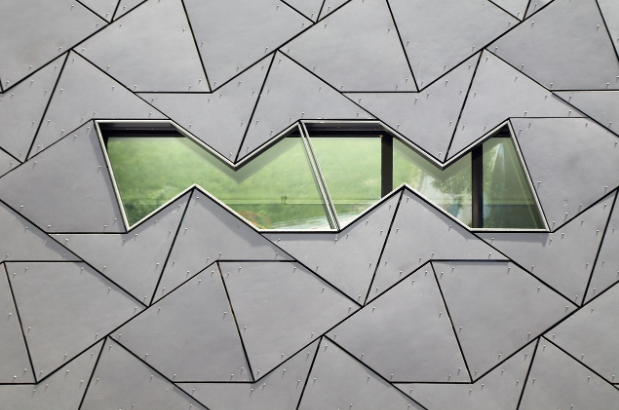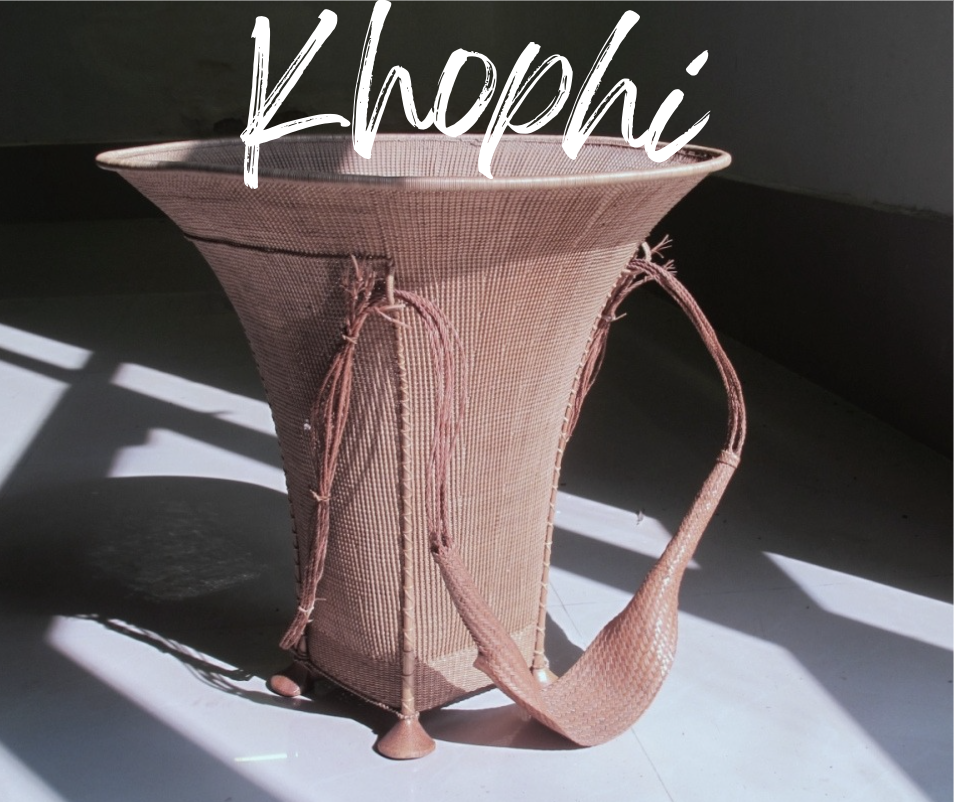The Legacy Of Usta Art From Persia To Bikaner
Jul 24, 2024 | Raushni Gupta
 The term "Usta" is derived from the Persian word ‘Ustad,’ meaning a master in a specific art. Usta refers to a skilled caste of artisans in Bikaner, Rajasthan, India, renowned for their unique handmade artistic techniques. This ancient art form, brought to India by Mughal Emperors from Iran, flourished in the 16th and 17th centuries. Raja Rai Singh, a general in Emperor Akbar’s court, introduced Usta artisans to Bikaner, making it a centre for Usta Art.
The term "Usta" is derived from the Persian word ‘Ustad,’ meaning a master in a specific art. Usta refers to a skilled caste of artisans in Bikaner, Rajasthan, India, renowned for their unique handmade artistic techniques. This ancient art form, brought to India by Mughal Emperors from Iran, flourished in the 16th and 17th centuries. Raja Rai Singh, a general in Emperor Akbar’s court, introduced Usta artisans to Bikaner, making it a centre for Usta Art. Usta art is evident in Bikaner’s Junagarh Fort, especially in Anup Mahal, Phool Mahal, Chandra Mahal, and Karan Mahal. Initially practiced on walls and ceilings, it later adapted to lighter, eco-friendly materials like marble, glass, wood, and camel hide. The art is known for intricate designs featuring leaves, flowers, vines, birds, and animals with golden foil work. Mohammad Yasin Usta, a contemporary artisan, continues this tradition, preserving and enriching Bikaner's cultural heritage.
History of Usta Art
Usta art, a traditional craft from Bikaner, Rajasthan, originates from the Persian word ‘Ustad,’ meaning master. Introduced to India by Mughal emperors, this art form flourished in the 16th and 17th centuries. Raja Rai Singh, a Mughal general, brought Usta artisans to Bikaner with Emperor Akbar’s permission, making the city a hub for this intricate craft.
Usta art is showcased in Bikaner’s Junagarh Fort, featuring detailed embossed patterns of leaves, flowers, and animals with golden foil work. Originally practiced on walls and ceilings, it later adapted to materials like marble and glass, preserving its cultural significance.

Techniques and Materials of Usta Art
Usta art, a traditional craft from Bikaner, Rajasthan, is renowned for its intricate embossing techniques and luxurious gold foil application. The process begins with skilled artisans creating elaborate raised patterns on various base materials. Gold foil is then meticulously applied to enhance these designs, providing a stunning, reflective finish. Detailed painting adds vibrant colour and depth, often featuring intricate Mughal motifs.
Materials used in Usta art include:
1. Marble: Ideal for its smooth, durable surface, perfect for detailed embossing.
2. Glass: Enhances the artwork’s visual appeal with its reflective properties.
3. Wood: Provides a lightweight and traditional base for decorative items.
4. Camel Hide: Traditionally used for its flexibility, though now limited due to ethical concerns.
Originally practiced on walls and ceilings, Usta art has evolved to use lighter materials like marble and glass, ensuring its continued relevance and preservation.
Process of making Usta Art
1. Selection of Base Material:
Materials: Choose marble, glass, wood, or traditionally camel hide.
Preparation: Clean and smooth the surface for detailed work.
2. Design Planning:
Sketching: Lightly sketch intricate Mughal-inspired patterns onto the base.
3. Embossing:
Tools: Use specialized tools to create raised patterns.
Technique: Press and carve designs meticulously.
4. Gesso Application:
Layers: Apply multiple thin layers of gesso, allowing each to dry.
5. Polishing:
Sanding: Smooth the gesso surface with fine sandpaper.
Burnishing: Achieve a glossy effect with a burnishing tool.
6. Gold Foil Application:
Adhesive: Apply a thin adhesive layer.
Gold Leaf: Carefully place gold foil sheets, pressing gently.
7. Painting:
Pigments: Use natural or synthetic pigments.
Technique: Apply paint in fine, detailed strokes.
8. Finishing Touches:
Sealing: Apply a protective varnish or lacquer.
Inspection: Ensure a flawless finish.
This process highlights the intricate craftsmanship and rich cultural heritage of Usta art in Bikaner.
Significant Locations of Usta Art
Junagarh Fort:
Anup Mahal: Features detailed Usta art with intricate embossed patterns and gold foil work.
Phool Mahal: Showcases floral and ornate Usta designs on palace interiors.
Chandra Mahal: Highlights Usta art in ceilings and walls with traditional motifs.
Karan Mahal: Displays Usta art’s historical significance with elaborate designs.
These sites exemplify the rich heritage of Usta art, preserving its intricate craftsmanship and cultural legacy.
Prominent Usta Artisans
Mohammad Yasin Usta:
Experience: Over 15 years in practicing Usta art.
Training: Learned from his father Ahmed Bakhar Ji Usta and uncle Shoukat Ji.
Specialization: Known for intricate embossing techniques and detailed gold foil application.
Ajmal Hussain Ji:
Recognition: Received prestigious awards such as the Rajasthan State Award and the Rashtrapati Award.
Contribution: Significant role in promoting and preserving Usta art.
Generational Legacy:
Continuity: Usta art is passed down through generations of artisans in Bikaner.
Adaptation: Combines traditional methods with contemporary creativity, ensuring the craft’s preservation and relevance.
These prominent Usta artisans are essential for maintaining the rich heritage and artistic excellence of Usta art, blending historical techniques with modern innovations.

Cultural Significance of Usta Art
Usta art holds profound cultural significance in the Islamic world, especially in Iran. This traditional Persian craftsmanship, where "usta" means "master," is celebrated for its intricate and highly skilled designs in tilework, woodwork, and metalwork. Usta art is more than decorative; it embodies deep Islamic values of unity and divine order.
Its elaborate geometric patterns, arabesques, and calligraphy reflect the complexity and harmony of creation. By adorning mosques, palaces, and public spaces, usta art enhances both the spiritual and aesthetic experiences of these sites. Its designs are intended to evoke a sense of divine perfection and order, making it a vital part of Islamic architectural heritage. Despite modern challenges, efforts to preserve and revive usta art ensure its continued relevance and appreciation, bridging historical artistry with contemporary contexts.

Sales Trend of Usta Art
Usta art, a specialized form of Persian craftsmanship, has a dynamic market with varying figures. The annual market size for high-end traditional arts, including Usta art, is estimated between $1 million and $10 million. Auction prices for Usta art pieces can range from $5,000 to over $100,000, depending on the artwork's historical significance and craftsmanship. Although specific export figures for Usta art are not readily available, it forms a part of the broader Persian arts export market.
Cultural institutions invest approximately $1 million to $5 million annually in the preservation, promotion, and restoration of Usta art. These investments support exhibitions and educational programs that enhance the craft's visibility. Usta art is primarily sold through specialized galleries, cultural exhibitions, and bespoke commissions. These trends highlight the ongoing value and cultural importance of Usta art in both national and international markets.
Production Rate of Usta Art
Production data for Usta art reveals key insights into this traditional Persian craftsmanship. Usta art, renowned for its intricate tilework, woodwork, and metalwork, is primarily produced in renowned centers such as Isfahan, Shiraz, and Tehran. The number of artisans specializing in Usta art is relatively small, with several dedicated workshops and studios creating these intricate pieces.
Production volumes are limited due to the meticulous and time-consuming nature of Usta art, with each piece often taking weeks or months to complete. Despite the modest production scale, Usta art holds significant cultural and commercial value. Each piece is crafted with high precision, contributing to its exclusivity and appeal in high-end markets. For detailed production figures, consulting artisan guilds, cultural institutions, or specialized market reports on traditional Persian crafts would provide more precise information.

Future Outlook of Usta Art
The future of Usta art in Bikaner is promising, driven by several key trends.
Revival and Innovation:
Traditional Techniques: Efforts are being made to revive traditional techniques while incorporating modern designs.
Young Artisans: New generations blend traditional motifs with contemporary themes, broadening the art's appeal.
Educational and Training Programs:
Workshops: Training programs are passing on Usta art skills to new artisans.
Collaborations: Partnerships with art schools and cultural institutions foster talent and innovation.
Technological Integration:
Digital Design: Digital tools enhance the precision and creativity of Usta art.
Online Platforms: Online platforms promote Usta art globally, expanding its market.
Sustainable Practices:
Ethical Materials: Sustainable and ethical sourcing of materials is being adopted.
Community Initiatives: Support for local artisans through community initiatives enhances sustainability.
Cultural and Tourist Promotion:
Cultural Festivals: Festivals and exhibitions attract tourists and art enthusiasts.
Heritage Tourism: Promoting Bikaner as a heritage tourism destination highlights its rich artistic traditions.
These trends ensure that Usta art preserves its heritage while evolving in the global cultural landscape.
Recommended








